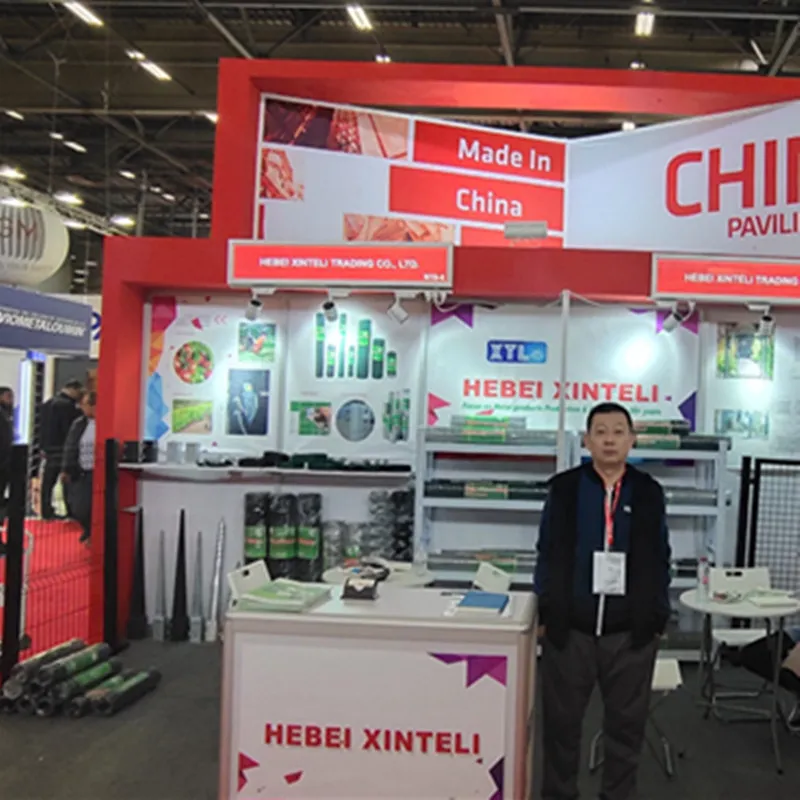
Nov . 30, 2024 00:51 Back to list
Guide to Installing Durable High Tensile Field Fencing for Better Livestock Protection
Installing High Tensile Field Fence A Comprehensive Guide
When it comes to establishing a secure and effective boundary for your field, high tensile field fencing stands out as one of the best options available. Known for its strength, durability, and low maintenance, high tensile field fence is particularly popular among farmers, ranchers, and landowners. In this article, we will guide you through the process of installing a high tensile field fence, ensuring that you can protect your property and livestock effectively.
Planning Your Fence
Before you begin the installation of your high tensile fence, proper planning is essential. Here are the key steps involved in planning
1. Determine the Purpose Clearly define the purpose of your fence. Are you keeping livestock in, keeping wildlife out, or simply marking the boundaries of your property? Understanding the purpose will help you in choosing the right type and height.
2. Measure Your Area Use a measuring tape to determine the total length of the fence you need. This includes the perimeter of the area you wish to enclose and any gates you plan to install.
3. Select Materials High tensile fencing typically consists of barbed wire or smooth wire, with the recommended tensioning posts and strainers. Depending on the livestock, you may want a fence with multiple strands of wire (usually between 5 to 7). You will also need corner posts, line posts, and tools for installation like a post driver, wire cutters, and gloves.
4. Check Regulations Before you start digging, it’s important to research local zoning laws and regulations regarding fencing. Local municipalities may have specific guidelines regarding fence heights, materials, and property lines.
Installation Process
Once you have completed your planning phase, you are ready to start the installation. Follow these detailed steps to ensure a solid installation
Step 1 Marking the Fence Line
Using stakes and string, mark the line where your fence will run. Ensure the line is straight and continuous. This will serve as your guide during installation.
Step 2 Setting the Posts
installing high tensile field fence

1. Corner and End Posts Start by installing the corner and end posts first. These posts need to be sturdier to withstand the tension of the wire. Typically, they should be set at least 2-3 feet deep in the ground, using concrete for additional strength. 2. Line Posts Place line posts at intervals of 10-12 feet, depending on your fence design. Ensure that each post is vertical and level. Again, these posts should be deeply set, around 2 feet in the ground.
Step 3 Wiring the Fence
1. Attaching Wire Start with the lowest wire and attach it to the line posts first. Use wire clips to secure the wire to the posts. Work your way up, attaching each strand of wire as you go.
2. Tensioning the Wire Once the wire is securely attached, it’s crucial to tension the wire properly. Use a fence stretcher for even tensioning along the entire length. Proper tension will help maintain the integrity of the fence and prevent sagging.
3. Securing the Ends At the corners and ends, make sure to secure the wire adequately, looping it around the post and using tensioners if necessary.
Step 4 Adding Gates
Install any gates you need by selecting suitable gate frames that match the height and strength of your fence. Gates should be easy to operate and securely fastened when closed.
Maintenance Tips
Once your high tensile field fence is installed, maintenance is relatively straightforward
- Regular Inspections Regularly check your fence for any loose wires or damaged posts. Address issues immediately to maintain security. - Tighten Wires Periodically check the tension of the wire and adjust it as needed, especially after weather events that may cause settling. - Vegetation Control Keep the area around the fence clear of weeds or brush that can compromise its structure.
Conclusion
Installing a high tensile field fence is a practical solution for ensuring the safety and security of livestock and property. By following the above guide and maintaining your fence regularly, you can enjoy the benefits of your investment for many years to come. With careful planning and execution, your high tensile field fence will serve as a strong and reliable boundary that meets your fencing needs.
-
Why a Chain Link Fence is the Right Choice
NewsJul.09,2025
-
Upgrade Your Fencing with High-Quality Coated Chicken Wire
NewsJul.09,2025
-
The Power of Fence Post Spikes
NewsJul.09,2025
-
The Best Pet Enclosures for Every Need
NewsJul.09,2025
-
Secure Your Property with Premium Barbed Wire Solutions
NewsJul.09,2025
-
Enhance Your Construction Projects with Quality Gabion Boxes
NewsJul.09,2025
Products categories











